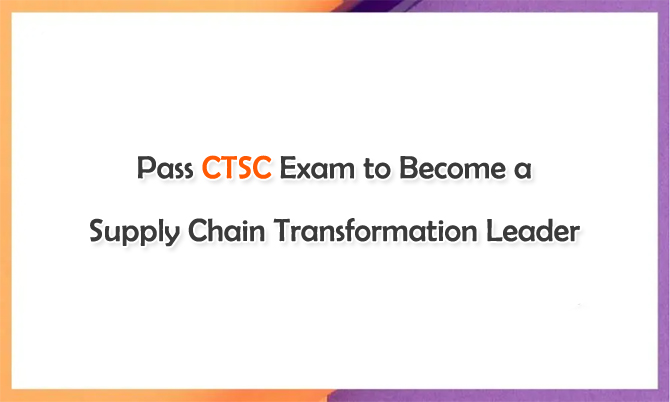The CTSC certification is designed for supply chain professionals actively engaged in or aspiring to lead transformation projects within their organizations. The program emphasizes the development of skills in systems thinking, digital fluency, and analytical methods tailored for diverse supply chains. By earning the CTSC, professionals demonstrate their expertise in supply chain strategy, showcasing an ability to navigate and lead major transformational endeavors.
Key Components of the CTSC Program
The CTSC program leverages globally recognized industry standards, including the ASCM SCOR Digital Standard, Enterprise Standards for Sustainability, and the Digital Capabilities Model. These components empower professionals to:
Identify Risks and Opportunities: Utilize appropriate frameworks, models, and approaches to identify risks and opportunities inherent in supply chain transformation.
Apply Systems Thinking: Develop, analyze, and validate concept alternatives for transformation using a systems thinking approach.
Manage Skills and Infrastructure: Effectively manage skills, roles, responsibilities, and infrastructure required for successful supply chain transformation.
Leverage Tools and Technologies: Identify tools and technologies that enable effective supply chain transformation.
Implement Reinforcement Strategies: Identify and implement strategies for reinforcing and replicating improvements, ensuring sustained success.
Is the CTSC Program Right for You?
The CTSC program is tailored for professionals currently involved in, supporting, initiating, or executing supply chain transformations. Whether you're already part of a transformation project or aiming to acquire the necessary skills to lead one, the CTSC certification opens new paths for career advancement.
CTSC Learning System: Your Path to Success
Studying with the APICS CTSC Learning System is integral to exam success. With an average recommended study time of 100 hours, the Learning System provides a comprehensive exam preparation program. Key features include:
Personalized Study Experience: Prioritize content based on knowledge gaps, track progress through quiz scores, and engage in interactive activities.
Microlearning: Focus on smaller content segments for efficient use of time and a clear understanding of each topic.
Expanded Learning Modalities: Access quizzes and videos that bring key concepts to life, enhancing the overall learning experience.
Convenience: Benefit from a mobile-first design, allowing access to learning materials anytime, anywhere, on any device.
CTSC Exam Overview
The CTSC exam consists of 150 questions, with 130 operational and 20 pretest questions. Candidates have 3.5 hours to complete the exam. Pretest questions contribute to statistical purposes only and are randomly distributed. A passing score is 300 points and above, with exams graded using a scaled score methodology to ensure consistent passing standards.
Study APISC CTSC Real Exam Questions
APISC CTSC real exam questions from Testpassport are a valuable resource for individuals preparing for the APISC CTSC certification exam. These questions are designed to simulate the format and difficulty level of the actual exam, allowing candidates to assess their knowledge and readiness. By practicing with CTSC real exam questions, test-takers can familiarize themselves with the exam structure, identify areas of strength and weakness, and gain confidence in their abilities. Additionally, working through these questions can help improve the critical thinking and problem-solving skills necessary for success on the APISC CTSC exam.
Earning the CTSC certification is not just about passing an exam; it's about embracing a role as a transformational leader in the ever-evolving realm of supply chain management. The CTSC program equips professionals with the skills, knowledge, and recognition needed to navigate complex transformations successfully. Are you ready to distinguish yourself and lead the way in supply chain transformation? The CTSC certification is your ticket to a new era of professional growth and opportunity.
